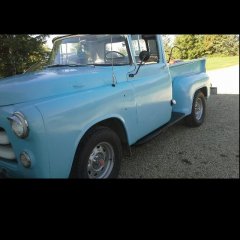Search the Community
Showing results for tags 'history'.
-
It might be of interest to the forum members that the D5 engine had a tremendous impact on Russian automotive industry. By 1937, the Ford A engine licensed from US by Russia exhausted its upgrading potential and became sorely inadequate. A new, more powerful engine was necessary. Russian engineers were not up to the task of quickly developing a 6-cylinder engine of their own, so a decision was taken to identify the best American engine of the time and license it. A team of experts headed by Andrew Lipgart, Chief Engineer of Gorky Auto Works (GAZ), determined that D5 fitted the bill. A license was purchased from Chrysler, alongside with key production equipment, and preparations started at GAZ for mass production. Actual production did not start right away. First, the whole design was changed to metric system. Second, few changes were made. One was helical gear drive instead of chain and sprockets for camshaft, which made it necessary to re-design the camshaft. As a result of changing bore and stroke, engine displacement somewhat decreased. The first serial engines produced in 1939 were installed in M1, the only mass-produced pre-war Russian passenger car. The first Russian D5 engines had a number of problems. Head studs had inadequate strength, which was remedied by adding more studs. Russian cast iron of the block was of inferior quality to American, causing excessive upper cylinder wear. This was fixed by using partial cylinder sleeves made of higher quality metal, spanning the top two inches of the cylinder bore. Babbitt main and rod bearings were not up to the task, and were replaced with bi-metal bearings. Due to inadequate lubrication (bad oil), rod bearings tended to spin during sustained high speed driving. The solution was limiting engine rpm with a sophisticated tamper-proof throttle design. Excessive dust of Russian roads accelerated wear, which necessitated using full flow crude oil filter in addition to bypass cartridge filter. Phenolic cam gear was getting lose on its hub. Eventually all the teething problems were solved, and the engine turned out powerful, economical, and reliable. Interestingly, most Russian D5 engines were equipped with aluminum heads; small number of cast iron head engines were also made. Marine and aviation(!) versions were being tested, but the war interrupted this work. On the outbreak of war in 1941 all D5 engines were diverted to use in light tanks such as T60, T70, and self-propelled gun SU-76. The total of over 50,000 engines were delivered for these purposes in 1941-45. After the war the main use of Russian D5 was in GAZ-51 2.5 ton trucks. 3.5 million of these trucks were made during 1946-75. D5 was also used in the luxury government sedan ZIM. A mass passenger car of 50s, GAZ M20 Pobeda (Victory) used the 4-cylinder chopped version of D5. The total of 236,000 were produced. D5 was also used on large scale in loaders, air compressors, welders, and as marine engine.
-
Hey all For those of us who have owned both slant 6s and flathead 6s. Share your stories, comments, good times and bad. Ive owned a few slant 6s 225s 1 with a 1bbl carb the other a 2bbl carb. Both A904 transmissions neither super fast but tough reliable and peppy. Many articles discuss the evolution to slant from flat. The big change over head valves 6 intake ports and long runner manifolds. Lets have fun..
- 104 replies
-
- history
- reliability
-
(and 1 more)
Tagged with:


